
Academic church of the Intercession of Theotokos celebrates its 150th anniversary
An academic church in honour of the Intercession of Theotokos has been a center of liturgical life of the Moscow Theological Academy for 150 years. Here, students carry their duties by helping at the service, singing and reading. Here, for the first time, seminarians go out on ambon and address parishioners with a word of sermon. Here the Church reveals to the world its new pastors and archpastors.
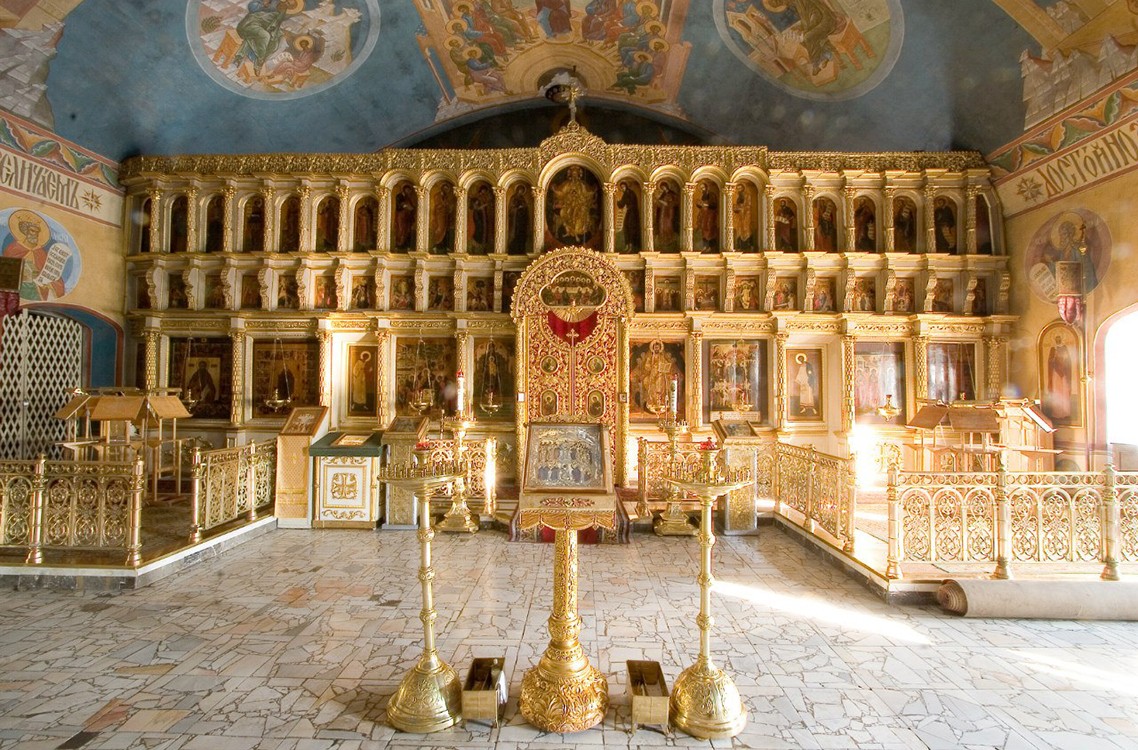
It may seem that the Intercession Church has existed since the foundation of the Moscow Theological Academy, but it is not so. Although the Academy was located on the territory of the Holy Trinity St. Sergius Laura since 1814, for more than 50 years it had not had its own church. This is due to the conviction of St. Filaret (Drozdov) that there were enough churches in Laura so it was pointless to increase their number. Therefore, evening services were performed by the academic priesthood in the most spacious room of the Academy, and in the Liturgy academic teachers and students prayed in the Laura.
Only after St. Filaret’s death, thanks to the efforts of archpriest Alexander Gorsky, Rector of the Moscow Theological Academy, and with the blessing of St. Innocent, Metropolitan of Moscow and Kolomensk, it was decided to establish a church in honour of the Intercession of the Theotokos and in memory of the grand opening of the Academy on this day in 1814. The church was constructed at the expense of a philanthropist, a representative of the famous merchant dynasty Alexei Tolokonnikov. The consecration of the church on February 12, 1870, on the day of memory of St. Alexis of Moscow, was performed by bishop Ignatius (Rozhdestvensky), Vicar of the Moscow diocese.
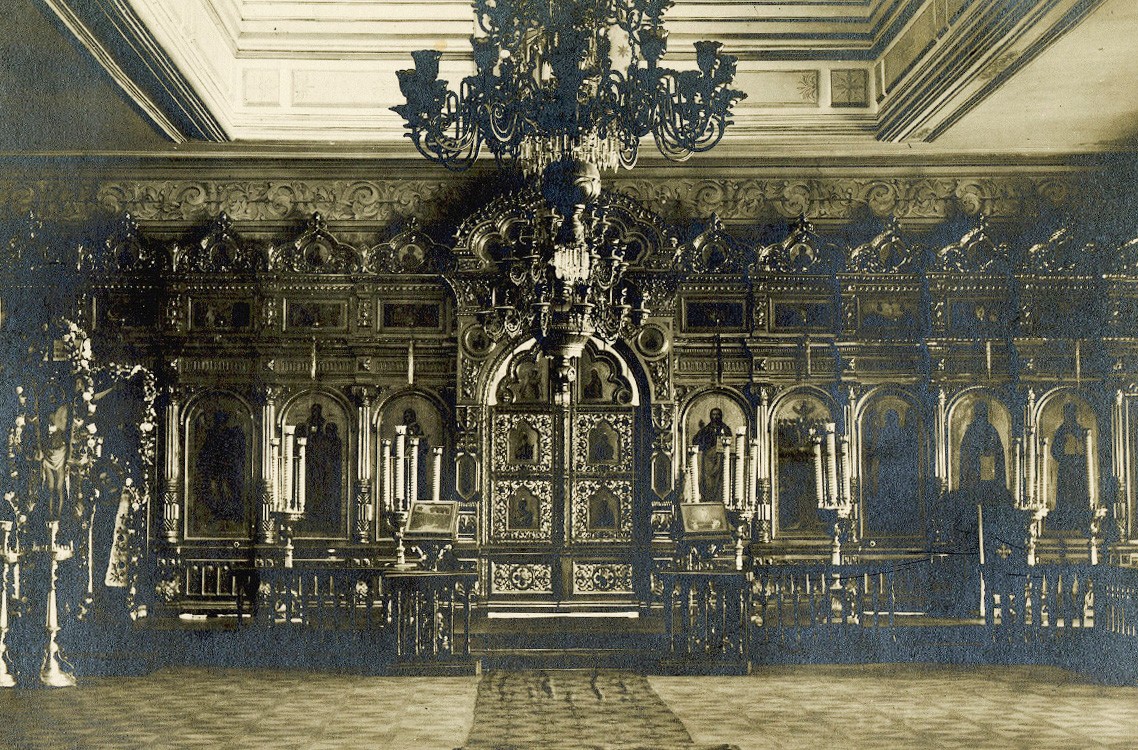
Initially, the academic church was rather small and did not have a special altar extension or a dome. However, in 1892, Metropolitan Leonty (Lebedinsky) during his visit to the Academy suggested an idea of expanding and remodeling church premises, that was readily accepted by the rector Archimandrite Anthony (Khrapovitsky). The reconstruction work was completed just before the 500th anniversary of the death of St. Sergius of Radonezh, and as a result the church space doubled.
Metropolitan Arseniy (Stadnitsky), Rector of the Moscow Theological Academy in 1900, recalled academic services of the time:
I served in an academic church. Our service is going great. The church is clean, even aristocratic, there is a clergy of students and the subdeacons - secular students - are very decent, even beautiful, other altar boys are also very useful. In general, I arranged the service in such way so it seems unlikely that they will be able to serve in such an environment elsewhere».
On Sundays since 1891 public non-service gatherings and open meetings were hold in the Academic Church, they were highly popular among residents of Sergiev Posad. A large number of parishioners and visitors raised a question of reconstructing church premises again. It happened during the rectorship of Bishop Theodore (Pozdeevsky) in 1912-1913. As a result of that renovation, the ceiling was replaced and the main room doubled, a large window in the eastern wall above the iconostasis made the interior space much lighter and a spacious choir was arranged in the western part of the church. The dome, which previously crowned the eastern part of the church, was moved to the middle. To celebrate the 100th anniversary of moving the Moscow Theological Academy to Trinity-Sergiu’s Laura, a new three-tier iconostasis was set up and church walls were painted according to Victor Vasnetsov’s model of Vladimir Cathedral in Kiev.
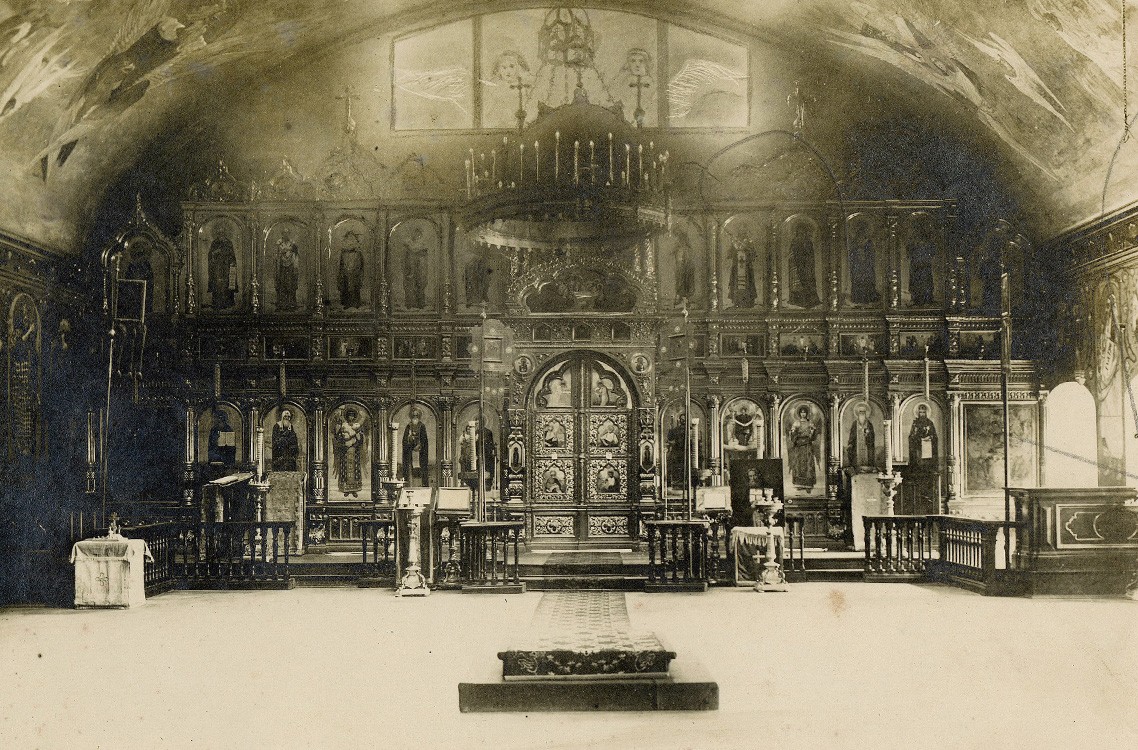
Hieromartyr Hilarion (Troitskiy), Archbishop of Verea, wrote a greeting word on re-opening of the academic church:
What is the glory of the academic church? It is the same as the highest glory of the Academy itself. Every institution is glorious as far it justifies its main purpose. The purpose of the Academy is clear and definite and consists of providing well-educated clergy for the Church. This is the reason for opening High theological schools. There are no other intentions and should not be.
<…>
Could you imagine how many leaders and pastors were brought up in it for God and His Holy Church for over four decades that our old church had existed? Here, for more than once Our Lord revealed Himself as he did to Moses in the Burning Bush, calling His chosen ones to serve His people and sending them to a battle not with the Egyptian Pharaoh, but with mental pharaohs and with the dark holders of this world. And only He knows how many good and holy intentions have ripened here in prayer to serve God and the Church. Either in the depth of a meek and silent spirit, or solemnly and in the face of the whole Church, they vowed to seek God’s help and not to depend on their own strengths. Many of them were married to the Church of God and joined the rank of priests around the Holy throne. This is the true glory of the Academy and its home church! Its tight bondage with a high theological school attached to it serves well and benefits the entire Russian Church».
From 1917 to 1919, the Academy was evicted from its historical buildings, which were given to the Central Military Technical Administration evacuated from Petrograd. However, the threat of closing the academic church arose even earlier. According to the Decree on “Separation of the Church from the State and the School from the Church,” published on February 23, 1918, churches at educational institutions had to be closed. In 1919, the authorities transferred the gate church in honor of the Nativity of John the Baptist to the parish community of the former Academic Church of the Intercession of Theotokos. Then, due to the closure of Laura, the parish community moved to Pyatnitsky and Vvedensky churches located outside the monastery walls. In the summer of 1920, local government transferred part of the icons and utensils of the closed academic church to the community, but in May 1928, Pyatnitsky and Vvedensky churches were also closed.
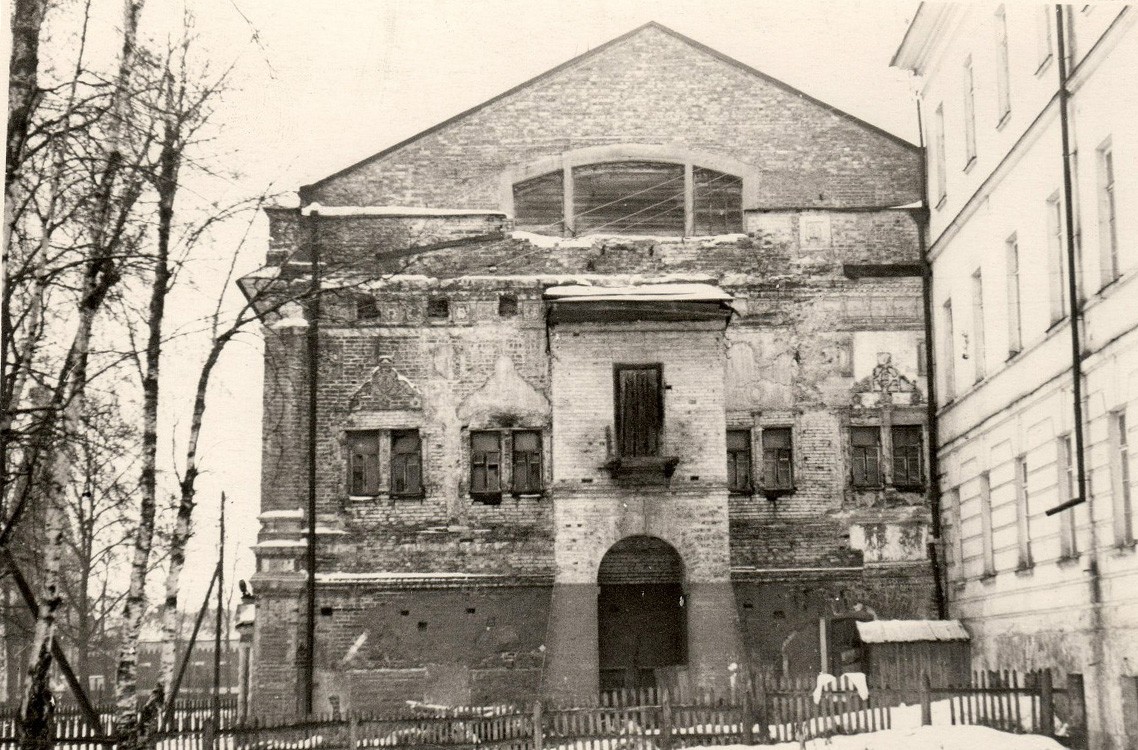
In 1944 the Orthodox Theological Institute and pastoral theological courses were established on the premises of the former Novodevichiy Convent, from that point we can start the process of re-opening Moscow theological schools. First, two churches – a gate-church in honor of the Transfiguration of Christ and a Dormition refectory-church – were given to this new institution. In 1948 theological schools which got status of Academy and Seminary in 1946, returned to their historical buildings of the pre-revolutionary Moscow Theological Academy. That year, however, the revived Academy returned to its native walls, the academic church in honor of the Intercession of Theotokos had not yet been restored and for a while served as the Zagorsk City House of Culture.

Restoration work began on December 30, 1954. On May 21, 1955, it was consecrated by His Holiness Patriarch Alexiy (Simansky) of Moscow and All Russia.
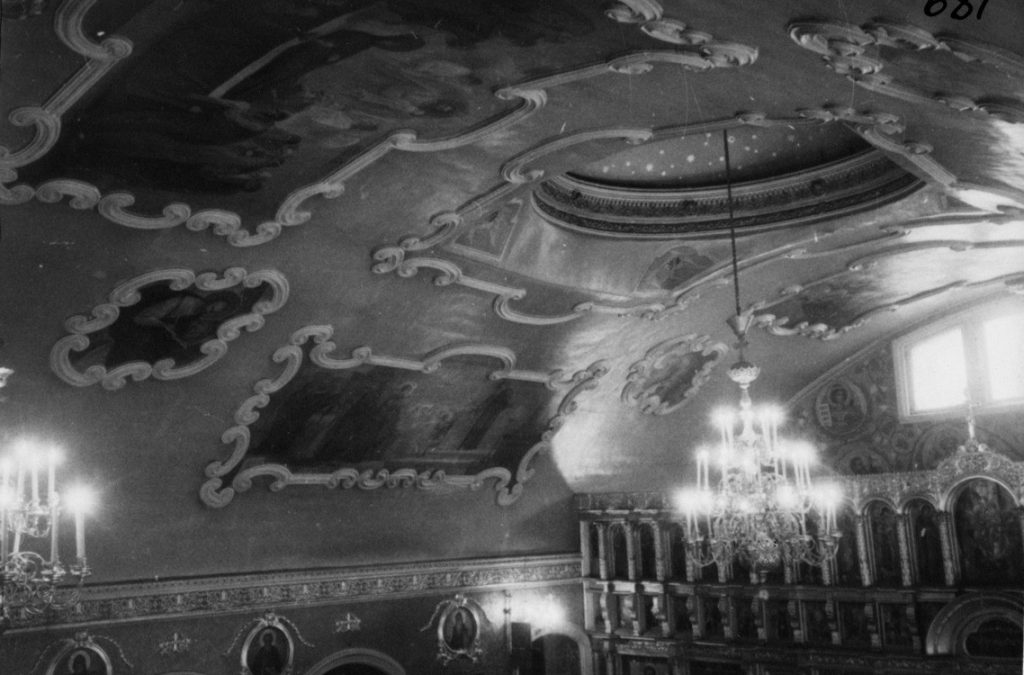
An iconostasis, which taken from the demolished in 1934 Moscow church of St. Chariton the Confessor, was installed. Wall paintings were made in several stages from 1955 to 1965. The work was carried out according to sketches and under the guidance of sister Juliania (Sokolova).
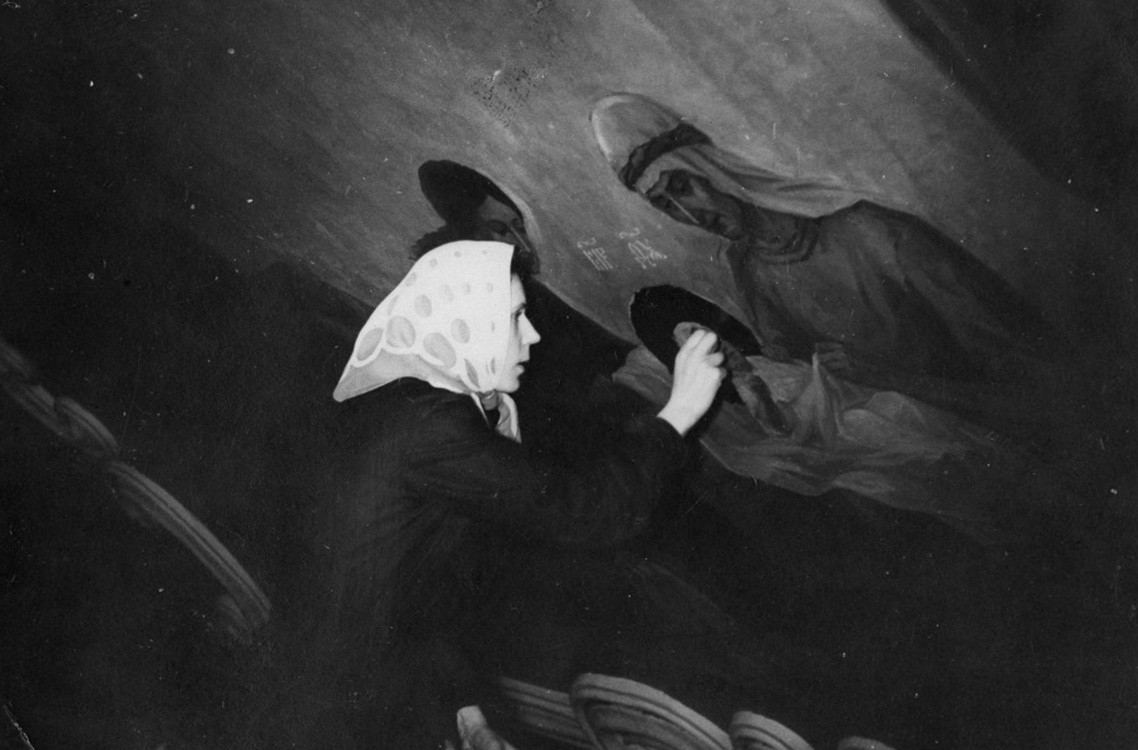
The church was badly damaged by a fire in September 1986. As a result, the dome crowning the building collapsed and wall paintings suffered significantly. It had to be restored in a year and a half by the millennium anniversary celebrations of the Baptism of Russia. First, the exterior of the building was restored, then the walls were cleaned from the soot and freshly plastered. In autumn 1987 icon painters started working on wall frescos and by the summer 1988 most of the work was completed.
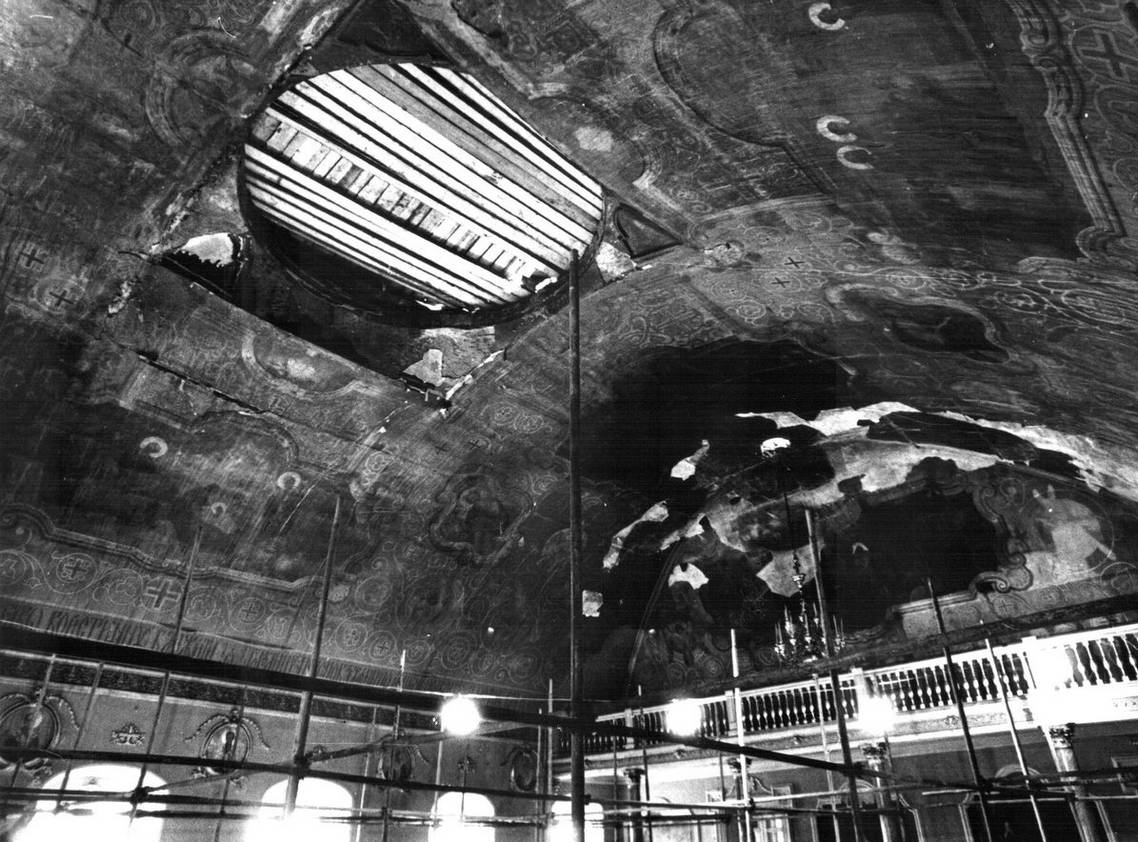
Metropolitan of Tallinn and All Estonia Eugene, Rector of the MThA in 1995-2018, shares his memories of the time:
For me, the Intercession Academic Church is a place where all my liturgical life passed since 1980, when I entered the Moscow Theological Seminary, to 2018 the year when I had been elected as the Primate of the Moscow Patriarchate Estonian Orthodox Church and dismissed from the post of rector of the Moscow Theological Schools. It was only a short break in 1991-1995, when I was a rector of the Stavropol Theological Seminary and then Chairman of the Study Committee). So I have many vivid memories associated with this church.
The first event that I still remember happened shortly after I entered the seminary. It was the very first singing lesson in a choir. I had to read from the Trisagion to “Our Father” (from the book as it was forbidden to read by heart). Although I had already had some reading experience, I was still very worried. And so when I reached a prayer “Our Father”, I stopped, thinking that it was all that was supposed to be read. My classmates started to pinch me and whisper: “Our Father, our Father,” but I could not understand what did they want from me.
My two ordinations also happened in an academic church of the Moscow Theological Academy. I keep memories of becoming a hierodeacon (on August 3, 1986) and a hieropriest (on August 28, 1986).
But an event that still is touchy and painful was the fire at the Academy on the night of September 27-28, 1986. As a result of the fire, the Intercession Church was badly damaged, and for more than a year it was closed for restoration work. And after, I regularly served there after the service could be resumed. First, being a hieromonk, then taking the post of an inspector of the Moscow Seminary and several years later the rector of the Moscow theological schools».
In 2018-2019, during the rectorship of the Archbishop of Verea Ambrose, the academic church was renovated. It included a profound cleaning of wall paintings, a new lighting and sound system was installed, the belfry was reconstructed and equipped with an electric ringing system.

Nowadays services in an academic church are performed daily. Festive and Sunday offices are led by the bishop of Zvenigorod Pitirim, who assumed the position of the Moscow Theological Academy rector in September 2019. He comments on the significance of the Intercession Church in his life:
Personally, the Intercession church has a particular meaning and significance. My spiritual life and development started in this church for about 25 years ago. Here, I confessed and took the Holy Communion for the first time and then for years of my studying at the Academy it became an integral part of my life. I took monastic vows at St. Sergiu’s shrine and soon after was taken to the altar of the Intercession Academic Church. Surprisingly, but in 2005 I was the only candidate in the Laura who were waiting to become a monk. Therefore, I spent two nights alone in the Intercession Church. Certainly, I was worried and experienced a special spiritual state. The deacon and priest ordinations were also performed in the same church. I have preserved the icon our former rector Eugene, Metropolitan of Tallinn and All Estonia, presented me on the day of consecration, I treat it with deep reverence like a relic. So, as you can see the Intercession church has played a crucial role for me. And not only for me. In some sense, our church is a record holder, it is unlikely that so many ordinations are performed elsewhere».
On festive days and on Sundays the Liturgy in the academic Intercession Church starts at 8:30, on weekdays at 6:20. Evening services always start at 17:00. On Wednesdays an akathist to the Intercession of Theotokos is performed at 18:20.
